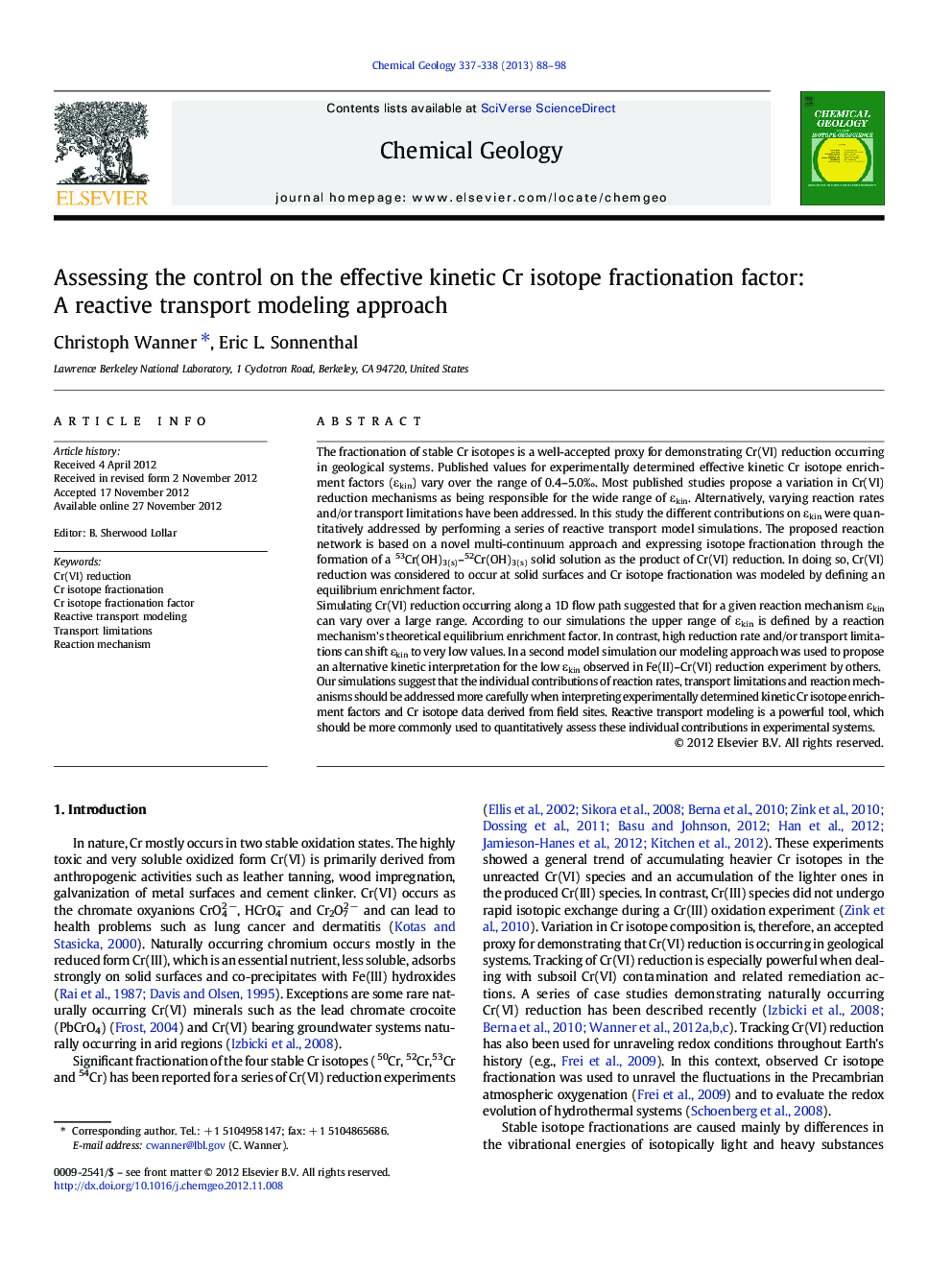| کد مقاله | کد نشریه | سال انتشار | مقاله انگلیسی | نسخه تمام متن |
|---|---|---|---|---|
| 4699208 | 1637630 | 2013 | 11 صفحه PDF | دانلود رایگان |
The fractionation of stable Cr isotopes is a well-accepted proxy for demonstrating Cr(VI) reduction occurring in geological systems. Published values for experimentally determined effective kinetic Cr isotope enrichment factors (εkin) vary over the range of 0.4–5.0‰. Most published studies propose a variation in Cr(VI) reduction mechanisms as being responsible for the wide range of εkin. Alternatively, varying reaction rates and/or transport limitations have been addressed. In this study the different contributions on εkin were quantitatively addressed by performing a series of reactive transport model simulations. The proposed reaction network is based on a novel multi-continuum approach and expressing isotope fractionation through the formation of a 53Cr(OH)3(s)–52Cr(OH)3(s) solid solution as the product of Cr(VI) reduction. In doing so, Cr(VI) reduction was considered to occur at solid surfaces and Cr isotope fractionation was modeled by defining an equilibrium enrichment factor.Simulating Cr(VI) reduction occurring along a 1D flow path suggested that for a given reaction mechanism εkin can vary over a large range. According to our simulations the upper range of εkin is defined by a reaction mechanism's theoretical equilibrium enrichment factor. In contrast, high reduction rate and/or transport limitations can shift εkin to very low values. In a second model simulation our modeling approach was used to propose an alternative kinetic interpretation for the low εkin observed in Fe(II)–Cr(VI) reduction experiment by others.Our simulations suggest that the individual contributions of reaction rates, transport limitations and reaction mechanisms should be addressed more carefully when interpreting experimentally determined kinetic Cr isotope enrichment factors and Cr isotope data derived from field sites. Reactive transport modeling is a powerful tool, which should be more commonly used to quantitatively assess these individual contributions in experimental systems.
► A reaction network for modeling Cr isotope fractionation is proposed.
► Presentation of two modeling studies using a multi-region and solid solution approach
► Assessment of different contributions on effective Cr isotope fractionation factor
► Variation in α is not a priori attributed to a variation in reaction mechanism.
► Alternative interpretation of a previously published Cr(VI) reduction experiment
Journal: Chemical Geology - Volumes 337–338, 28 January 2013, Pages 88–98
